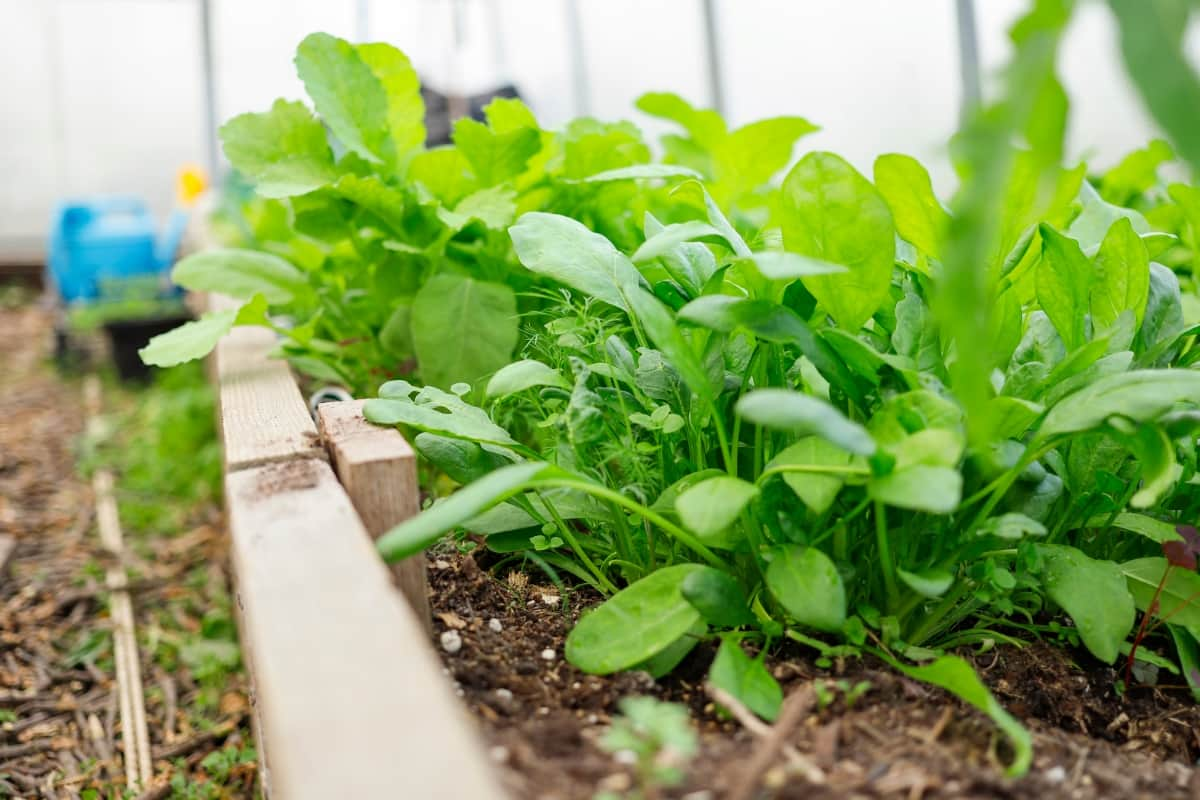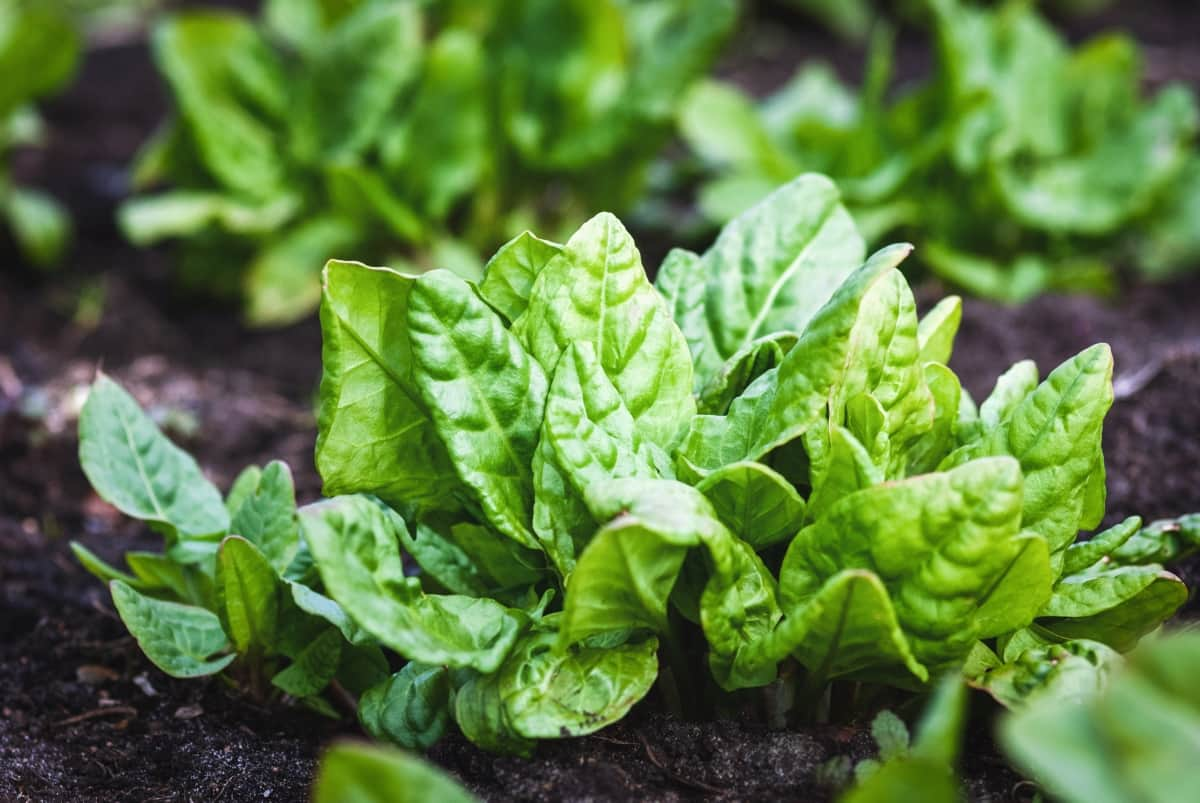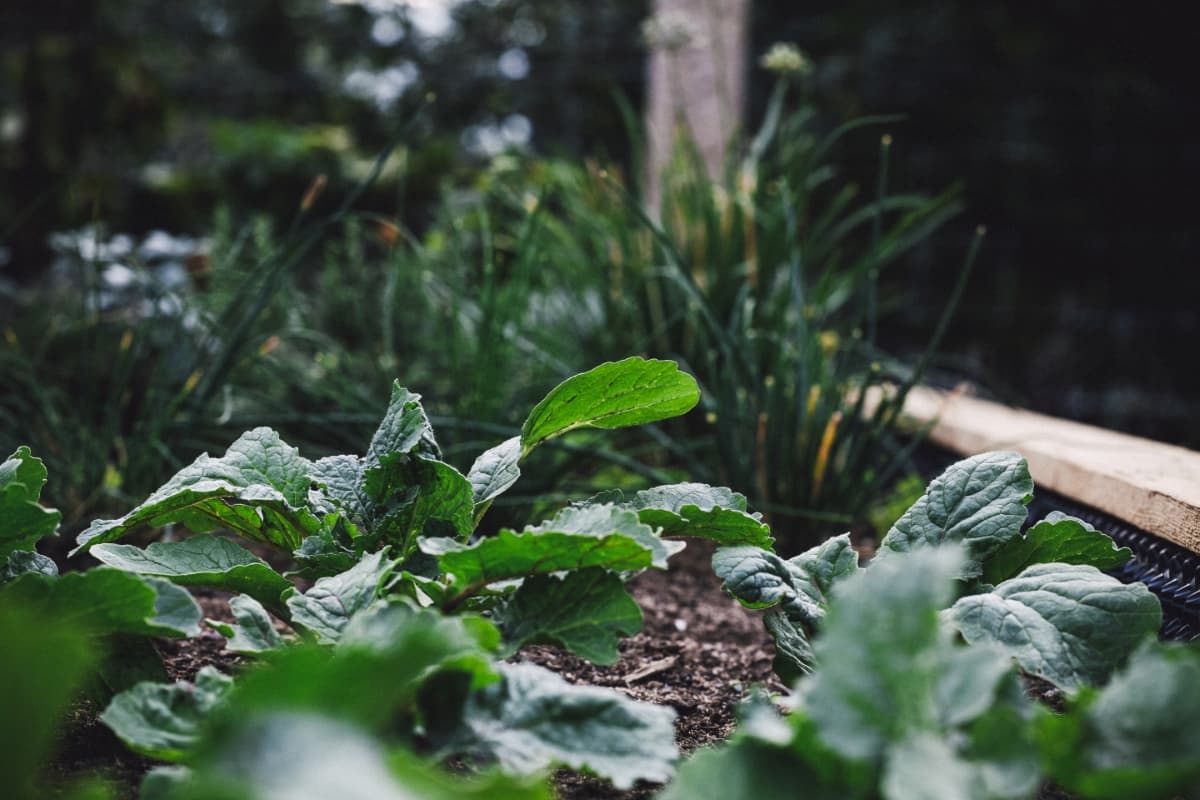Spinach, a nutrient-rich leafy green, thrives in certain plants, much like how some individuals flourish in the company of others. This article explores the concept of companion plants for spinach, identifying the best companion plants and herbs, their benefits, and some combinations to avoid.

A companion plants chart will help you understand what grows well with spinach and what you should not plant next to spinach. The principles of companion planting apply whether you’re planting in the ground, raised beds, or containers, and they have implications for organic gardening and pest management.
Benefits of Companion Plants for Spinach in the Garden
Companion planting refers to planting different crops nearby for mutual benefit. One of the most significant benefits of spinach companion plants is their ability to improve growth and yield. Companion plants can help deter pests, improve pollination, attract beneficial insects, and enhance soil fertility. Spinach benefits greatly from being planted near certain companion vegetables, herbs, and flowering plants. Conversely, some plants can hinder spinach growth, becoming bad companion plants for spinach.
Best Companion Plants for Spinach to Deter Pests
One significant advantage of using companion plants for spinach involves pest control. Crops like radishes, garlic, and onions are some of the best companion plants for spinach, as they can deter pests that often plague spinach, such as aphids and slugs. The strong aroma of these plants can mask the scent of spinach, confusing and repelling pests.
This makes spinach companion plants beneficial not only for spinach growth but also for overall garden health. Additionally, strategic planting can eliminate the need for harmful chemical pesticides, making your garden safer and more sustainable.
Spinach Companion Plants for Improved Pollination
Companion plants can also aid in pollination. Spinach is self-pollinating, meaning it doesn’t necessarily require companion plants. However, planting flowering plants nearby can attract pollinators to your garden, benefitting other plants. Furthermore, certain plants, such as cilantro and dill, flower around the same time as spinach and can serve as good companions to draw in a wider array of pollinators. Their presence not only adds color and diversity to your garden but also fosters an environment that encourages the successful growth of various plant species.
In case you missed it: 10 Common Problems With Garden-Grown Spinach Plants: Treatment and Solutions

Companion Plants for Spinach in Containers
When it comes to container gardening, compact and shallow-rooted plants are your go-to companions for spinach. Lettuce, radishes, and strawberries are excellent choices, as they won’t compete for root space and will allow spinach to grow freely. These plants also have light and water requirements similar to spinach, which is crucial when sharing a container. Furthermore, growing companion herbs such as cilantro, dill, and parsley in the same container as spinach can be beneficial. They use different soil nutrients, reduce competition, and have similar care needs, simplifying maintenance.
Companion Herbs for Spinach in Organic Gardening
Companion planting is even more crucial in organic gardening, where chemical inputs are restricted. Companion herbs for spinach, like cilantro, dill, and parsley, can serve multiple purposes. In addition to repelling certain pests, they can attract beneficial insects and improve the overall biodiversity of your garden. For instance, dill attracts hoverflies, predators of aphids, a common spinach pest. These herbs, while enhancing the taste of your meals, also provide a natural, chemical-free way of protecting your spinach crops.
Flowering Companion Plants for Spinach to Attract Beneficial Insects
Introducing flowering plants into your spinach garden serves multiple benefits. Plants like marigolds, nasturtiums, and borage are visually pleasing and attract beneficial insects to your garden. These insects can help control pests and improve overall garden health.
In case you missed it: 6 Causes of Dying Spinach and How to Fix It?

Marigolds are particularly beneficial; their pungent smell can deter pests, and certain types can also repel nematodes, microscopic worms that can damage spinach roots. Furthermore, while attracting aphids away from your spinach, nasturtiums also draw in beneficial predatory insects, forming a natural pest control system.
Companion Vegetables for Spinach in Raised Beds
In raised beds, where space might be limited, choosing the right companion vegetables for spinach can optimize growth and productivity. Cool-weather crops such as peas, radishes, and onions work well as they share similar growing conditions and seasons. They also have varying root depths and growth patterns, minimizing competition for space and nutrients.
Furthermore, tall plants like peas can shade spinach, which prefers cooler temperatures. But, do bear in mind to avoid planting spinach with crops like potatoes and carrots, as they can inhibit its growth and are considered bad companions for spinach.
Companion Plants for Spinach to Improve Soil Fertility
Certain companion plants can help improve soil fertility, benefiting spinach growth. Legumes like peas and beans are ideal options since they possess the ability to fix nitrogen from the air into the soil, which is a vital nutrient for spinach. In turn, as a heavy feeder, spinach utilizes this extra nitrogen for its growth, reducing the need for additional fertilizers. Also, the root systems of these companion plants can help improve soil structure and water infiltration, fostering a healthier growing environment for spinach.
Companion Plants Chart for Spinach in the Garden
To bring all this information together, a companion plants chart can be a handy reference for any gardener looking to optimize their spinach crop. This chart should list the best companion plants for spinach, detailing their benefits, whether they deter pests, improve soil fertility, or aid pollination.
It should also highlight any bad companion plants for spinach to avoid in your garden. Armed with this information, you can create a thriving garden where spinach and its companions coexist harmoniously, benefiting from each other’s presence and collectively contributing to a healthier, more productive garden.
Companion Plants for Spinach: A Practical Guide
Putting this theory into practice is simpler than you might think. Start by assessing the needs of your spinach plants in terms of light, water, and soil. Consider the space available: a traditional garden bed, a raised bed, or a container. Next, choose companion plants that meet these requirements and offer the above benefits.
In case you missed it: How to Grow Spinach in Small Spaces: A Guide for Urban Gardeners

Remember that the best companion plants for spinach should deter pests, attract beneficial insects, aid in pollination, or improve soil fertility. Finally, avoid planting spinach with crops known to be bad companions, as these can negatively impact your spinach’s growth and yield.
Conclusion
Companion planting with spinach is a valuable technique that can yield numerous benefits, ranging from pest control to improved pollination, soil fertility, and garden productivity. By carefully selecting companion vegetables, herbs, and flowering plants, you can create a garden ecosystem where each plant helps the others thrive.
Whether planting in containers or raised beds or using organic gardening methods, this guide has given you a thorough understanding of spinach companion plants’ benefits. So, go ahead and experiment with the different combinations in your garden. Use the companion plants chart for spinach as your reference, and remember to remember what grows well with spinach and what you should not plant next to spinach.
- Feed Your Flock for Less: Top 10 Tips to Save on Chicken Feed
- Ultimate Guide to Ossabaw Island Hog: Breeding, Raising, Diet, and Care
- Hatching Answers: The Top 10 Reasons Your Chickens Aren’t Laying Eggs
- Eggs and Economics: Breaking Down the Cost of Raising Backyard Chickens
- Defend Your Greens: Proven Methods to Keep Iguanas Out of Your Garden
- Ultimate Guide to Cinnamon Queen Chicken: A Comprehensive Guide for Beginners
- Ultimate Guide to California Tan Chicken: Breeding, Raising, Diet, Egg-Production and Care
- Ultimate Guide to Marsh Daisy Chicken: Breeding, Raising, Diet, and Care
- 10 Types of Chicken Farming Businesses You Can Start for Profits